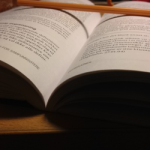Let’s face it: you don’t know how to read for the GMAT.
But why would you? A good, solid education will teach you exactly how NOT to read for the GMAT.
Having trouble with the Reading Comprehension section of the exam is pretty much proof that you have a good degree!

What’s the problem?
Ultimately, the techniques that are useful in university-level research and reading are hardly the techniques that will be useful for this particular exam.
There are a very few things that the Reading Comprehension section asks you to do.
What are those things?
On the whole, you need the ability to zoom in and out of the passage.
First, you need to be able to define WHAT the passage is talking about, no more and no less. That is, if it’s talking about a particular mangrove tree in a particular swamp in Florida, it had better be about that particular tree! Not about branches on that tree (too narrow) or all mangrove trees (too broad).
This can be done VERY QUICKLY. That is, a lot faster than you might expect! I’d say somewhere between 30 seconds and two minutes for any passage.
This is similar to the SCOPE you may have heard about before.
Second, you need the ability to break the passage into smaller, identifiable chunks (four or five per passage) and be able to determine what they have in common (hint: it’s the Purpose!).
Third, you need to be able to figure out what the point of all of these little chunks is when put into the perspective limited by the Scope.
This is the THEME or PURPOSE of the passage. Can you tell me what it is in one sentence? Then that’s not it.
One sentence is all it takes.
How can I define the purpose?
Another way to look at it is to assume that each passage has a PIVOT IDEA. That is, an idea that links the second half of the passage to the first half.
If you get that Pivot Idea, you have basically got the Purpose of the passage. If you still can’t do it in one sentence, it’s not good enough.
How can we tell what is adequate to answer the questions?
Look at the answer choices.
If the Scope is too broad or too narrow, eliminate it. If the language is too strict or severe (hint: “seems to be” would be better than “is always”), throw it out. If it doesn’t address the Purpose, throw it out.
How can we use structure to our advantage?
An old colleague used to tell students that any GMAT passage can be read in 30 seconds and all its questions answered with at least 80% accuracy.
While this may be true in principle, it speaks of an important distinction: 80% of the questions are structure-based questions, while 20% of the questions are detail-based.
The important thing is to learn the structure of the individual passage and furthermore to be able to identify where the DETAILS relevant to the detail questions lie.
Detail questions are of course based on the information that is clearly in the passage. You just have to uncover it. If you know where the details are and are careful of trap questions, you’re bound to get the answer correct!
It’s a game of balance.
Learn to read for structure rather than detail and you’re 80% there. The other 20% comes from taking things slowly and carefully.
Click HERE to arrange a
FREE PHONE CONSULTATION
PS Are you reading properly for the GMAT?
PPS Do you know your WPM reading rate?